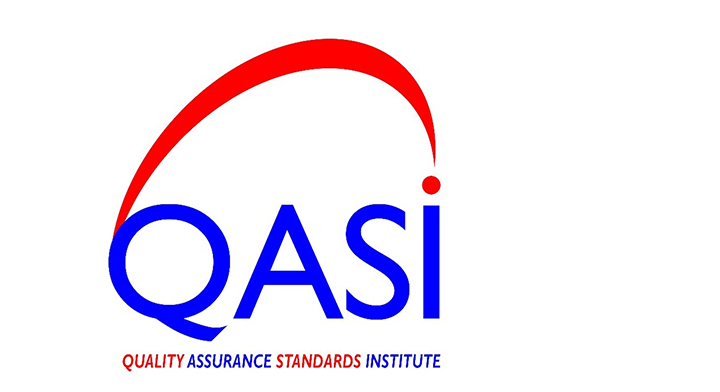ISO 45001 Occupational Health and Safety Management System

The International Labor Organization (ILO) estimates that millions of workers die from work-related accidents and illnesses each year. Despite progress in workplace safety, much remains to be done. To address these issues, ISO created ISO 45001, an international standard for occupational health and safety management systems.
ISO 45001 is an international standard for occupational health and safety management systems (OHSMS). It’s based on previous standards and guidelines. By implementing ISO 45001, companies can create safer workplaces and improve overall health and safety performance. This standard applies to all types of organizations, regardless of size or industry. ISO 45001 uses a similar structure to other ISO standards, making it easier to integrate with existing management systems. It replaced the British standard OHSAS 18001 in 2018.
With many workplace accidents and injuries, it’s crucial to prioritize health and safety. To reduce risks, companies must focus on employee well-being. Everyone in all industries should work together to prevent accidents. Our ISO 45001 training courses (Implementers’ and Auditors’) teach you internationally recognized practices for improving workplace conditions and employee well-being and your ability to understand, implement, or audit health and safety policies to reduce workplace injuries.
Poor health and safety practices can lead to emotional distress, human loss, and financial problems. To avoid these issues, companies should use a structured approach to managing health and safety.
Guidelines and procedures can:Prevent illnesses and injuries: They promote a healthy and safe workplace, reducing work-related health issues.
Reduce hazards and risks: Clear guidelines for using equipment and tools help prevent accidents and injuries.
Prevent negative consequences: Well-written guidelines and procedures protect both workers and companies from the negative effects of health and safety risks.
Benefits of ISO 45001 for organizations:
ISO 45001 can improve how a company operates and create a safer workplace. Some benefits include:
- Enhanced reputation: Recognized as a leader in workplace health and safety.
- Increased employee trust: Demonstrates commitment to employee well-being.
- Reduced insurance costs: Fewer accidents and injuries lead to lower premiums.
- Improved ROI: Higher productivity and fewer injuries boost profits.
- Reduced employee turnover: Prioritizing employee health and well-being leads to better retention.
QASI is excited to support you, contact us to begin with the first step!
Explore our courses and find the perfect fit for your needs.
- ISO 45001 Implementers’ course
- ISO 45001 Auditors’ course based on ISO 19011
- Managers and consultants who want to learn about basic occupational health and safety concepts.
- People who want to create safer workplaces.
- Individuals interested in understanding the key requirements of ISO 45001 for health and safety management systems.
- People seeking a career in occupational health and safety.
Training Days: 5
Exam Duration: 1 hour
Retake Exam: Yes
For additional information, please contact info@qasi.co.ug
ISO 45001 Implementers’ course
ABOUT THIS COURSE
Course Description:
- The ISO 45001 Implementers’ course is designed to equip individuals with the knowledge and skills necessary to establish, implement, maintain, and continually improve an occupational health and safety management system (OHSMS) that conforms to the ISO 45001 standard. ISO 45001 provides a framework for organizations to prevent work-related injury and illness.
Key topics covered in the course include:
- Understanding ISO 45001: A comprehensive overview of the ISO 45001 standard, including its scope, objectives, and key requirements.
- OHSMS implementation: Step-by-step guidance on establishing and implementing an OHSMS that meets the requirements of ISO 45001.
- Risk assessment and control: Identifying, assessing, and controlling occupational health and safety risks.
- Emergency preparedness and response: Developing and implementing emergency plans to address potential hazards.
- Incident investigation and reporting: Investigating and reporting workplace accidents and incidents.
- Internal auditing: Conducting internal audits to assess the effectiveness of the OHSMS.
Management review: Conducting regular management reviews to evaluate the performance of the OHSMS and identify areas for improvement.
Course objectives:
Participants will be able to:
- Establish and implement an OHSMS that meets the requirements of ISO 45001.
- Conduct internal audits of the OHSMS.
- Identify and address occupational health and safety risks.
- Develop and implement emergency preparedness and response plans.
- Contribute to the continuous improvement of the OHSMS.
Certification
- Participants get certificate of successful course completion awarded at the end of the training.
- Minimum requirements for certification will include: 100% attendance of the sessions and at least 70% in the post-test. Participants who fail to meet the criteria above get a certificate of participation.
Resource Material
- ISO 45001 international standard.
- Hand-outs and course material will be supplied to all participants
Who Should Attend:
Participants include:
- Health and safety managers
- Human resources professionals
- Operations managers
- Line managers
- Safety officers
- Consultants
Course Prerequisites
- Occupational health and safety principles: A general understanding of occupational health and safety concepts, including hazard identification, risk assessment, and control measures.
- Management systems: Familiarity with the structure and operation of management systems, such as quality management systems.
- Risk management: Knowledge of basic risk management principles and techniques.
- Legal requirements: Awareness of relevant occupational health and safety laws and regulations.
ISO 45001 Auditors’ course based on ISO 19011
ABOUT THIS COURSE
Course Description:
- The ISO 45001 Auditors’ course, based on the ISO 19011 standard, is designed to equip individuals with the knowledge, skills, and techniques necessary to conduct effective audits of occupational health and safety management systems (OHSMS) that conform to the ISO 45001 standard. ISO 45001 provides a framework for organizations to prevent work-related injury and illness.
.
Course objectives:
Participants will be able to:
- Conduct effective audits of OHSMS that conform to ISO 45001.
- Identify nonconformities and recommend corrective actions.
- Evaluate the effectiveness of OHSMS.
Contribute to the continuous improvement of occupational health and safety within organizations.
Certification
- Participants get certificate of successful course completion awarded at the end of the training.
- Minimum requirements for certification will include: 100% attendance of the sessions and at least 70% in the post-test.
- Participants who fail to meet the criteria above get a certificate of participation.
Resource Material
- ISO 45001
- ISO 19011
- OHSMS checklists
- Hand-outs and course materials
Who Should Attend:
- Internal auditors
- External auditors
- Health and safety managers
- Human resources professionals
- Operations managers
- Safety officers
- Consultants
Course Prerequisites
- ISO 45001: A general knowledge of the key principles, clauses, and requirements of the ISO 45001 standard for occupational health and safety management systems (OHSMS).
- ISO 19011: Familiarity with the principles and techniques for conducting audits, as outlined in the ISO 19011 standard.
- Occupational health and safety: A basic understanding of occupational health and safety concepts, including hazard identification, risk assessment, and control measures.
- Quality management systems: Knowledge of quality management systems and their principles.
Who should attend?
- Managers and consultants who want to learn about basic occupational health and safety concepts.
- People who want to create safer workplaces.
- Individuals interested in understanding the key requirements of ISO 45001 for health and safety management systems.
- People seeking a career in occupational health and safety.
Other Information
Training Days: 5
Exam Duration: 1 hour
Retake Exam: Yes
For additional information, please contact info@qasi.co.ug







